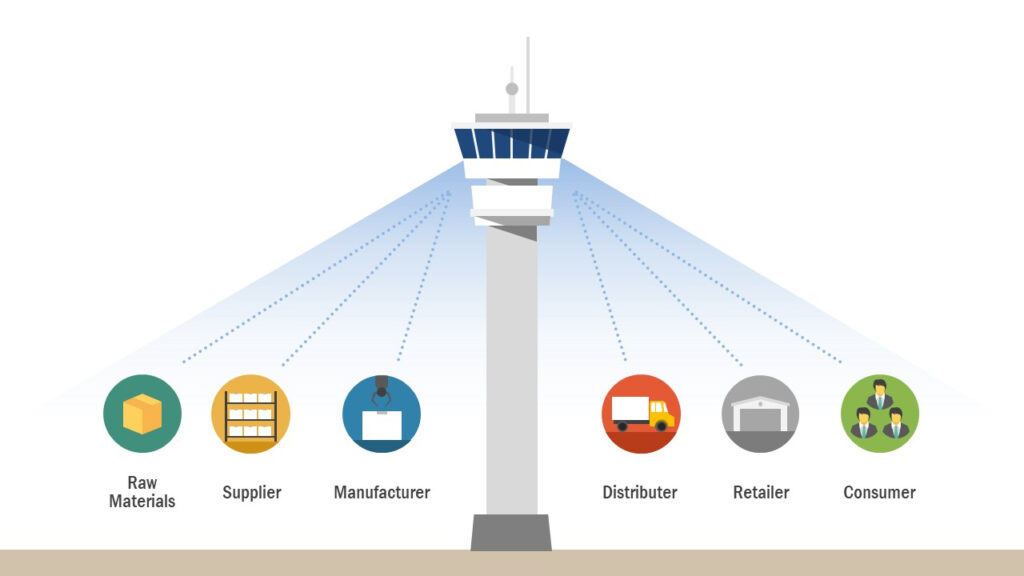
What is a Control Tower?
A Control Tower is a centralized hub that provides real-time visibility and management of an organization’s supply chain and logistics operations. Think of it as the brain of the supply chain, where all data and activities are monitored and coordinated.
The Importance of a Control Tower in Logistics
In today’s fast-paced business environment, timely and accurate information is crucial for making informed decisions. A Control Tower plays a vital role in enhancing the efficiency, transparency, and reliability of logistics operations. It enables businesses to track shipments, monitor inventory levels, and optimize transportation routes, leading to improved customer satisfaction and operational performance.
How Does a Control Tower Operate?
A Control Tower operates by integrating various systems and technologies, such as GPS tracking, RFID, and IoT devices. It collects and analyzes data from multiple sources in real-time to provide a comprehensive view of the supply chain. This enables organizations to identify potential issues and bottlenecks proactively and take corrective actions promptly.
Key Components of a Control Tower
Real-time Visibility and Monitoring
One of the primary components of a Control Tower is real-time visibility and monitoring. It allows businesses to track the movement of goods, monitor inventory levels, and identify any delays or disruptions in the supply chain. This real-time insight enables organizations to make quick and informed decisions to optimize logistics operations.
Data Analytics and Predictive Analysis
Data analytics and predictive analysis are essential components of a Control Tower. By analyzing historical and real-time data, organizations can identify patterns, trends, and potential risks in the supply chain. This predictive capability enables businesses to forecast demand, optimize inventory levels, and mitigate risks effectively.
Collaboration and Communication Tools
Effective communication and collaboration are critical for the success of a Control Tower. Modern Control Towers utilize advanced communication tools and platforms to facilitate seamless collaboration between various stakeholders, including suppliers, carriers, and customers. This enables organizations to coordinate activities, share information, and resolve issues more efficiently.
Benefits of Implementing a Control Tower
Improved Efficiency and Productivity
Implementing a Control Tower can significantly improve the efficiency and productivity of logistics operations. By automating repetitive tasks, optimizing transportation routes, and reducing manual interventions, businesses can streamline their supply chain processes and achieve faster and more reliable deliveries.
Enhanced Visibility and Transparency
A Control Tower provides enhanced visibility and transparency across the supply chain, allowing businesses to track shipments, monitor inventory levels, and identify potential issues proactively. This increased visibility enables organizations to make informed decisions, optimize operations, and improve customer satisfaction.
Cost Reduction and Savings
By optimizing logistics operations, reducing inefficiencies, and minimizing errors, a Control Tower can help businesses reduce costs and achieve significant savings. By streamlining processes, improving resource utilization, and eliminating unnecessary expenses, organizations can enhance their profitability and competitive advantage.
Challenges in Setting Up a Control Tower
Integration of Multiple Systems
One of the major challenges in setting up a Control Tower is the integration of multiple systems and technologies. Ensuring seamless communication and data exchange between different platforms and devices can be complex and time-consuming, requiring careful planning and coordination.
Data Quality and Accuracy
Maintaining data quality and accuracy is another challenge in implementing a Control Tower. Ensuring that the data collected from various sources is reliable, consistent, and up-to-date is crucial for making informed decisions and optimizing logistics operations effectively.
Skill and Training Requirements
Training and developing skilled personnel to operate and manage a Control Tower can be a significant challenge for organizations. It requires expertise in data analytics, supply chain management, and technology, as well as the ability to interpret and analyze complex data effectively.
Future Trends in Control Tower Technology
Artificial Intelligence and Machine Learning
Artificial Intelligence (AI) and Machine Learning (ML) are shaping the future of Control Tower technology. By leveraging AI and ML algorithms, organizations can automate and optimize various aspects of logistics operations, such as demand forecasting, route optimization, and risk management, leading to improved efficiency and performance.
Automation and Robotics
The adoption of automation and robotics is another significant trend in Control Tower technology. By integrating robotic process automation (RPA) and autonomous vehicles into logistics operations, businesses can reduce manual interventions, improve accuracy, and enhance operational efficiency.
Advanced Analytics and Big Data
Advanced analytics and Big Data are playing an increasingly important role in Control Tower technology. By analyzing large volumes of data from various sources, organizations can gain deeper insights into their supply chain, identify patterns and trends, and make data-driven decisions to optimize operations and mitigate risks effectively.
Conclusion
In conclusion, a Control Tower is a crucial component of modern supply chain and logistics operations. It provides real-time visibility, enhances efficiency, and enables organizations to make informed decisions to optimize their supply chain processes. Despite the challenges in implementation, the future of Control Tower technology looks promising, with advancements in AI, automation, and big data analytics driving innovation and improvements.
